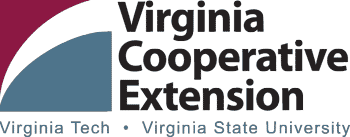Considerations for Purchasing Safe Produce
Many considerations are valid in a decision to select and purchase safe produce. On this page we summarize a few of those. Does where you buy your produce affect its safety? Do certain labels on produce indicate that it is safer for you to eat? What should you look for to choose fresh, safe produce? Visit the sections below that address these questions and then check out some of the relevant resources for additional information on purchasing safe produce.
Fresh produce may be purchased from a variety of sources including the supermarket, grocery stores, health or natural food stores, farmers markets, or roadside stands. Consumers in our Virginia produce safety survey considered produce from farmers markets and natural food stores more reliably safe than produce from supermarkets or roadside stands. They also considered organic produce to be safer than produce grown under conventional production practices. However, there are currently no research results to support either of these assumptions.
For example, the International Food Information Council Foundation published this summary of university professionals discussing the relative safety of produce purchased at farmers markets versus that purchased at grocery stores. What they emphasize is that regardless of the method used to grow the produce or the type of market outlet where the produce is sold, there is never a guarantee for ensuring the produce is safe. What matters most is that potential risks have been addressed and the produce has been handled properly, starting at the farm through the marketplace, into your home to your table.
Fresh produce, like other products, carry a variety of labels. Some of these are simply indicators of specific branding or marketing programs, while others carry significant information about product characteristics and practices in order to meet specific certification criteria. In our own survey, we found that many consumers were unfamiliar with the purpose and significance of many labels used here in Virginia. It is important to remember that many labels have nothing whatsoever to do with addressing food safety contamination risks, and even farms that have passed a third party food safety audit may not put labels on their product as such. Thus, we recommend checking in with the farmer and/or market about their food safety practices.
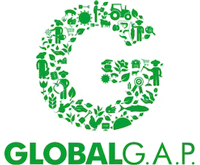 GLOBALG.A.P. globally connects farmers and brand owners in the production and marketing of safe food to provide reassurance for consumers. The GLOBALG.A.P. Standard sets very strict criteria for Good Agricultural Practices that farmers must comply with if they want to sell their products to major retailers around the world, and retailers rely on GLOBALG.A.P. Certification to ensure that the products they sell to their consumers can be traced back to a certified farm or production facility.
GLOBALG.A.P. globally connects farmers and brand owners in the production and marketing of safe food to provide reassurance for consumers. The GLOBALG.A.P. Standard sets very strict criteria for Good Agricultural Practices that farmers must comply with if they want to sell their products to major retailers around the world, and retailers rely on GLOBALG.A.P. Certification to ensure that the products they sell to their consumers can be traced back to a certified farm or production facility.
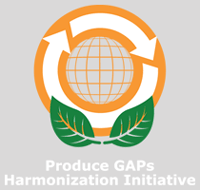 The Produce GAP Harmonization Initiative developed food safety Good Agricultural Practices standards and audit checklists for pre-harvest and post-harvest operations. These audits focus on best agricultural practices to verify that fruits and vegetables are produced, packed, handled, and stored in the safest manner possible to minimize risks of microbial food safety hazards. There are many certifying entities that can conduct the Harmonized GAP audit, including the USDA.
The Produce GAP Harmonization Initiative developed food safety Good Agricultural Practices standards and audit checklists for pre-harvest and post-harvest operations. These audits focus on best agricultural practices to verify that fruits and vegetables are produced, packed, handled, and stored in the safest manner possible to minimize risks of microbial food safety hazards. There are many certifying entities that can conduct the Harmonized GAP audit, including the USDA.
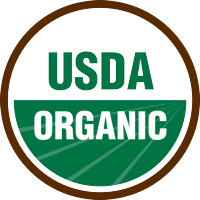 Products with the USDA Organic seal are certified by the U.S. Department of Agriculture as having been grown under organic production practices. In order to use this seal or claim the product is organic, the product must follow strict production, handling and labeling standards. This seal is NOT a certification of food safety.
Products with the USDA Organic seal are certified by the U.S. Department of Agriculture as having been grown under organic production practices. In order to use this seal or claim the product is organic, the product must follow strict production, handling and labeling standards. This seal is NOT a certification of food safety.
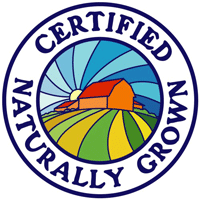 Certified Naturally Grown is a Participatory Guarantee System (PGS) which is a system of peer reviewers that evaluate producer farms for adherence to a set of production standards that include organic crop production. It is NOT a USDA certification of organic production. It is NOT a certification of food safety.
Certified Naturally Grown is a Participatory Guarantee System (PGS) which is a system of peer reviewers that evaluate producer farms for adherence to a set of production standards that include organic crop production. It is NOT a USDA certification of organic production. It is NOT a certification of food safety.
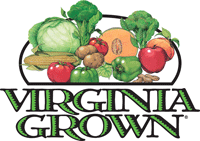 Virginia Grown is marketing program sponsored by the Virginia Department of Agricultural and Consumer Services (VDACS) to promote fresh, local products to consumers. It has a proven track record for increasing visibility, developing additional media attention and enhancing marketing opportunities for Virginia Grown products. It is NOT a certification of food safety.
Virginia Grown is marketing program sponsored by the Virginia Department of Agricultural and Consumer Services (VDACS) to promote fresh, local products to consumers. It has a proven track record for increasing visibility, developing additional media attention and enhancing marketing opportunities for Virginia Grown products. It is NOT a certification of food safety.
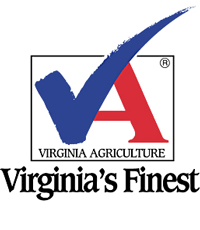 The Virginia’s Finest Trademark Program was created in 1989 to enhance the economic opportunities for and success of Virginia’s specialty food companies, processors and agriculture producers. The products must be from Virginia and meet strict quality standards. This program is generally used for processed products. It is NOT a certification or indication of food safety.
The Virginia’s Finest Trademark Program was created in 1989 to enhance the economic opportunities for and success of Virginia’s specialty food companies, processors and agriculture producers. The products must be from Virginia and meet strict quality standards. This program is generally used for processed products. It is NOT a certification or indication of food safety.
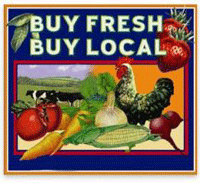 Buy Fresh Buy Local programs are designed to helps consumers find local products while building relationships between growers, food artisans, farmers’ markets retailers, restaurants, and institutions. The national organization has about nine chapters throughout Virginia. This seal is NOT an indication of food safety.
Buy Fresh Buy Local programs are designed to helps consumers find local products while building relationships between growers, food artisans, farmers’ markets retailers, restaurants, and institutions. The national organization has about nine chapters throughout Virginia. This seal is NOT an indication of food safety.
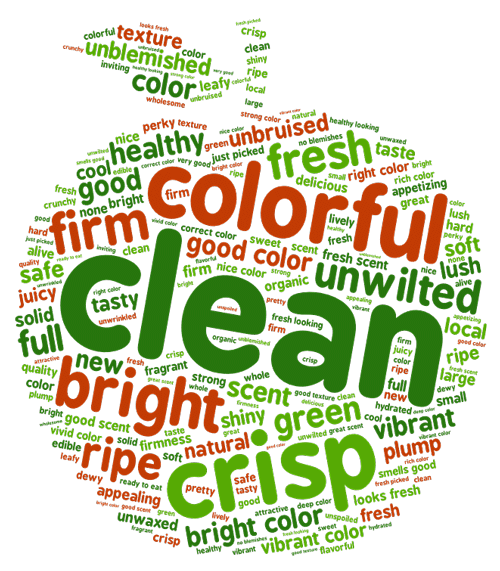
The word cloud shown here shows a compilation of terms used by respondents of our Virginia consumer survey when asked what they look for in fresh produce. As you will see in the publications found on this page, our respondents had great comments. Fresh produce should be clean, undamaged, with clear, bright colors. It should not be wilted, rotten, or blemished, as these conditions increase the potential contamination by harmful pathogens.
Safe Handling and Storage of Raw Fruits and Vegetables
This publication from Virginia Cooperative Extension presents guidelines for best practices for food safety in purchasing fresh fruits and vegetables as well as storage and preparation. Do not purchase produce that is bruised or damaged as these are entry points for pathogens. Precut produce like cut leafy greens or fruit slices should have been refrigerated or on ice at the grocery store or farm market. Replace your produce purchases into the refrigerator as soon as possible or carry a cooler if you expect your return trip to take more than 30 minutes.
A Guide to Buying Fresh Fruits and Vegetables
A University of Tennessee publication showing harvest seasons and quality characteristics of various fresh fruits and vegetables.
https://extension.tennessee.edu/publications/Documents/SP527.pdf
Safe Handling of Raw Produce and Fresh-Squeezed Fruit and Vegetable Juices
A video and accompanying factsheet by the U.S. Food and Drug Administration on purchasing, handling and storing fresh produce with food safety in mind.
